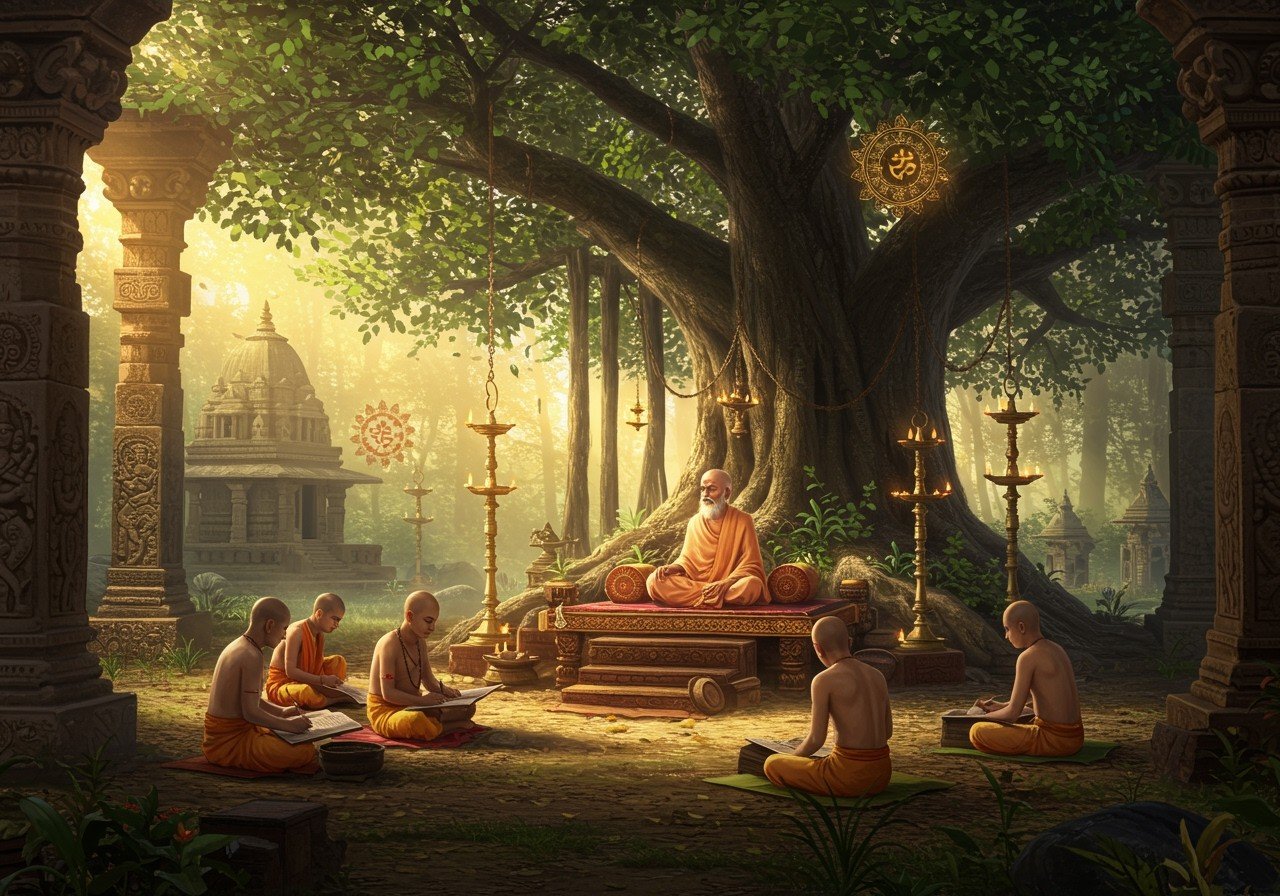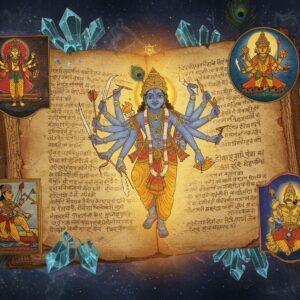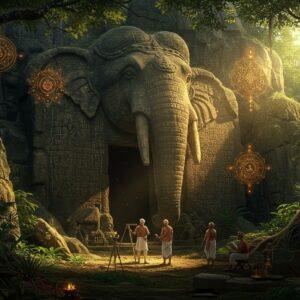Education in Ancient India: A Journey Through Gurukuls and Wisdom

India’s educational heritage is a captivating narrative of wisdom and enlightenment, stretching back millennia. This legacy, deeply rooted in the Vedic period, emphasizes not just knowledge acquisition, but also character development and spiritual growth. The Gurukul system, a cornerstone of this ancient tradition, fostered a holistic approach to learning that continues to inspire even today. Let’s embark on a journey through this fascinating era, exploring its profound impact on Indian society and culture.
The Vedic Period: Dawn of Education
The Vedic period marked the dawn of formal education in ancient India, with the Vedas serving as the primary source of knowledge. Learning was intrinsically linked to religious practices, guided by the principles of dharma. Oral tradition was paramount, with key texts like the Vedas, Brahmanas, and Upanishads passed down through generations via memorization and recitation. Rishis, revered sages, played a pivotal role as educators, embodying wisdom and spiritual guidance. Shruti, the act of listening and remembering, was a central learning method, ensuring the preservation of sacred knowledge.
This era laid the foundation for a holistic educational approach, encompassing philosophy, mathematics, astronomy, and the arts. This comprehensive curriculum nurtured well-rounded individuals, emphasizing moral and spiritual growth alongside intellectual development. Education was viewed as a transformative journey, shaping not only the mind but also the spirit.
The Gurukul System: A Holistic Learning Environment
The Gurukul system stands as a testament to ancient India’s commitment to holistic education. Gurus (teachers) and Shishyas (students) resided together in Ashrams, fostering a close bond of mentorship and learning. This residential setting provided an immersive experience, enabling personalized instruction and character development. The curriculum encompassed a wide range of subjects, from philosophy and mathematics to astronomy and the arts, reflecting the diverse nature of knowledge.
Discipline and character-building were integral aspects of Gurukul life, preparing students for a life of purpose and societal contribution. The emphasis on values like humility, truthfulness, and self-reliance shaped individuals who were not only knowledgeable but also ethically grounded.
For those seeking to connect with the spirit of ancient learning, Poojn.in offers a wide selection of traditional prayer beads and spiritual items. These can enhance your personal meditation practice and create a sacred space for learning and reflection, echoing the serene environment of the Gurukuls.
Beyond Gurukuls: The Expansion of Knowledge
As time progressed, education in ancient India evolved beyond the Gurukul system. Prominent institutions like Nalanda and Takshashila emerged as centers of higher learning, attracting scholars from across the globe. These universities offered advanced studies in medicine, politics, law, and various other disciplines, marking India’s growing influence in global education.
This expansion of knowledge signified a dynamic period in Indian history, demonstrating a commitment to intellectual pursuit and cross-cultural exchange. Nalanda, in particular, became a renowned center for Buddhist studies, drawing students and scholars from far and wide. Its vast library and vibrant intellectual atmosphere solidified India’s reputation as a beacon of knowledge and learning.
Key Aspects of Education in Ancient India:
- Early Institutions: Initially, education was imparted in remote ashrams, where students adhered to strict monastic rules set by their gurus. With population growth, urban learning centers like Varanasi and Nalanda gained prominence. These bustling hubs of knowledge facilitated a wider dissemination of information and ideas.
- Curriculum: The curriculum in ancient India was surprisingly diverse. Beyond traditional subjects like Indian religions, mathematics, and logic, it encompassed art, architecture, martial arts, weaponry, political administration, civic life, animal husbandry, horticulture, environment, religious scripts, divinity, theology, philosophy, epics, stories, and more. This breadth of subjects ensured a well-rounded education, preparing individuals for various aspects of life.
- Vedic Education: Vedic education, the most ancient system, was deeply connected to the Vedic period. Focusing on holistic development, it emphasized moral, physical, spiritual, and intellectual growth. Values such as humility, truthfulness, discipline, self-reliance, and respect for all creations were instilled in students from a young age. This value-based education laid the foundation for a just and harmonious society.
- Gurukuls: Traditionally, male education commenced under the guidance of a guru in Gurukuls. Supported by public donations, Gurukuls represented one of the earliest forms of publicly funded education. These residential learning centers, also known as ashrams, were often named after revered sages. Students considered the gurukul their second home, spending many years immersed in learning and spiritual growth.
- Buddhist Education: Buddhist centers of learning like Taxila and Nalanda evolved into urban institutions, offering a wider range of subjects. These included grammar, medicine, philosophy, logic, metaphysics, arts, and crafts. Buddhist education was notably more inclusive, welcoming students from diverse backgrounds. Its curriculum featured the study of pitakas, Abhidharma, and sutras, providing a comprehensive understanding of Buddhist philosophy and practice.
- Centers of Learning: Takshashila, Nalanda, Mithila, Vikramshila, Telhara, and Shaunaka Mahashala were prominent centers of learning. Nalanda, in particular, stood out as a hub for various subjects, attracting students from all corners of India and beyond. Its reputation for excellence in education drew scholars and seekers of knowledge, fostering a vibrant intellectual community.
- Role of Religion: Religion played a significant role in shaping education in ancient India. Religious texts, philosophies, and practices were integrated into the curriculum, influencing the moral and ethical development of students. This integration of religion and education aimed to cultivate individuals who were not only knowledgeable but also spiritually grounded.
- Teaching Methods: Teaching in ancient India was largely oral, with students memorizing and meditating on the teachings. Teachers provided personalized attention, tailoring their instruction to each student’s knowledge and skill level. This individualized approach ensured that every student received the support and guidance they needed to thrive.
- Women’s Education: Contrary to some misconceptions, education in gurukuls was not restricted to men. Women like Maitreyi, Viswambhara, Apala, Gargi, and Lopamudra achieved renown as Vedic scholars, demonstrating the inclusivity of ancient Indian education. Their contributions to intellectual discourse enriched the learning environment and challenged traditional gender roles.
- Morality: Education in ancient India aimed to liberate individuals from earthly attachments, emphasizing the importance of inner transformation. The mind, or ‘chitha,’ was recognized as the source of both bondage and liberation. This focus on morality and self-awareness fostered a deeper understanding of the human condition.
- Informal Education: Both formal and informal education systems coexisted in ancient India. Indigenous education took place at home, in temples, pathshalas, tols, chatuspadis, and gurukuls. Temples served as centers of learning, disseminating knowledge of the ancient system. This diverse range of educational settings ensured that learning was accessible to various segments of society.
- Donations: Knowledge was considered sacred, and no fee was charged for education. Contributions towards education were regarded as the highest form of donation. This philanthropic approach ensured that learning was not limited by financial constraints, reflecting the belief in the inherent value of knowledge.
Deepen your understanding of ancient Indian traditions with Poojn.in’s insightful blog posts on spiritual journeys and cultural heritage. Discover the rich history and significance of sacred sites, and connect with the essence of India’s spiritual legacy.
The Enduring Legacy of Ancient Indian Education
The ancient Indian education system, with its emphasis on holistic development and spiritual growth, continues to inspire modern educational philosophies. From the humble Gurukuls to renowned universities like Nalanda, this legacy stands as a testament to India’s rich cultural heritage. The harmonious blend of spiritual and intellectual pursuits shaped individuals who made significant contributions to society. As we embrace new learning methodologies, the essence of ancient Indian education reminds us of the enduring importance of holistic development, guiding us to honor our past while embracing the future with open minds and hearts.
Explore a wide range of spiritual and religious items at Poojn.in, including sacred texts, idols, and puja essentials, to connect with the rich traditions of ancient India.


